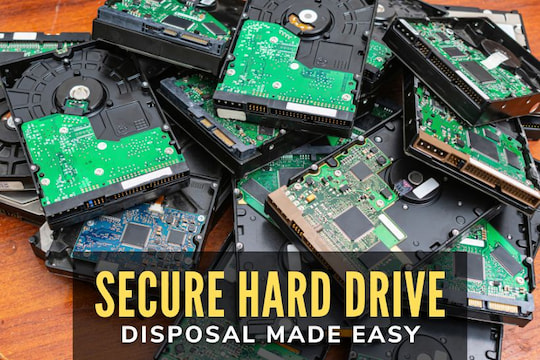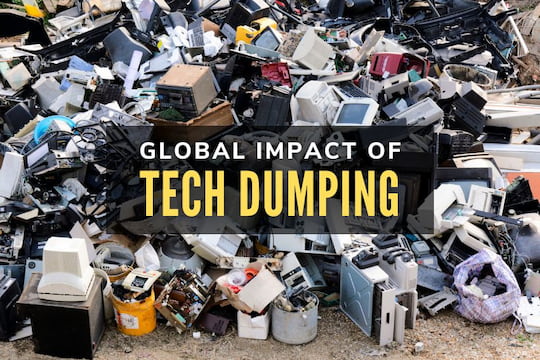In today's fast-paced digital workspaces, electronic devices are constantly being upgraded, and old ones are quickly discarded. This cycle generates significant electronic waste, or e-waste, which can be hazardous to the environment if not handled properly. For IT managers in Los Angeles and Orange County, understanding how to set up an e-waste recycling program at work is essential for meeting sustainability goals, ensuring data security, and complying with local regulations.
How to Start an Office E-Waste Recycling Program
Setting up a successful e-waste recycling program in your office doesn't have to be complicated. You can build an efficient, compliant, and environmentally responsible system with a few strategic steps and the right recycling partner.

1. Evaluate Your Current E-Waste Output
Begin by assessing the amount and types of e-waste your office generates. This includes computers, servers, printers, monitors, cables, phones, and even old batteries or peripherals. IT managers should track device lifecycles to anticipate when equipment will become obsolete.
2. Gain Executive Buy-In and Educate Your Team
Before launching the program, secure support from leadership and educate your team. Create internal policies that outline what qualifies as e-waste, how to dispose of it, and why it matters. When staff understand the purpose behind recycling efforts, they're more likely to participate consistently.
3. Partner with a Certified E-Waste Recycler
Work with a certified electronics recycling company that meets California's environmental and data destruction standards. Look for recyclers that offer secure data wiping and proper documentation, especially when handling hard drives and other storage devices. Many Los Angeles and Orange County recyclers provide pickup services, asset tracking, and certificates of destruction.

4. Set Up Collection Points Around the Office
Designate accessible drop-off stations for employees to dispose of electronic items. These should be clearly labeled and located in common areas like break rooms or IT departments. Make sure bins or containers are secure and safe for temporary e-waste storage.
5. Schedule Regular Pickups and Track Results
Coordinate with your recycling provider to establish monthly or quarterly pickups, depending on your e-waste volume. Keep records of what is collected, how it's processed, and where it ends up. Tracking this data improves accountability and can be included in your company's sustainability reporting.
6. Promote the Program Internally
Use company-wide emails, intranet posts, and signage to keep the recycling program in people's minds. Recognize departments that actively participate and share progress milestones. Promoting your efforts creates a culture of environmental responsibility.

Benefits of an Office E-Waste Program
By understanding how to set up an e-waste recycling program at work, IT managers ensure proper disposal of outdated tech and strengthen their organization's sustainability efforts. A structured e-waste program reduces the risk of data breaches, minimizes landfill contributions, and enhances your company's reputation for corporate responsibility.
Make an Impact, One Device at a Time
Every old monitor, broken keyboard, or outdated phone has a responsible place to go. Starting your e-waste recycling program may seem small, but it contributes to a much larger environmental effort. If you're looking to take the next step, explore more ways to reduce e-waste and lead the change in your workplace.



















